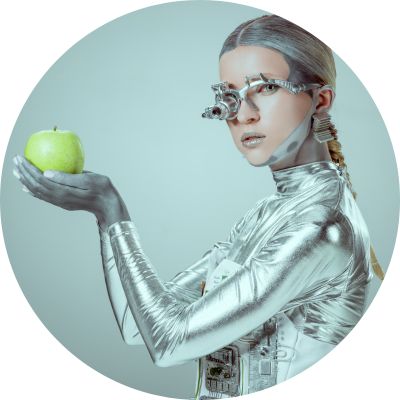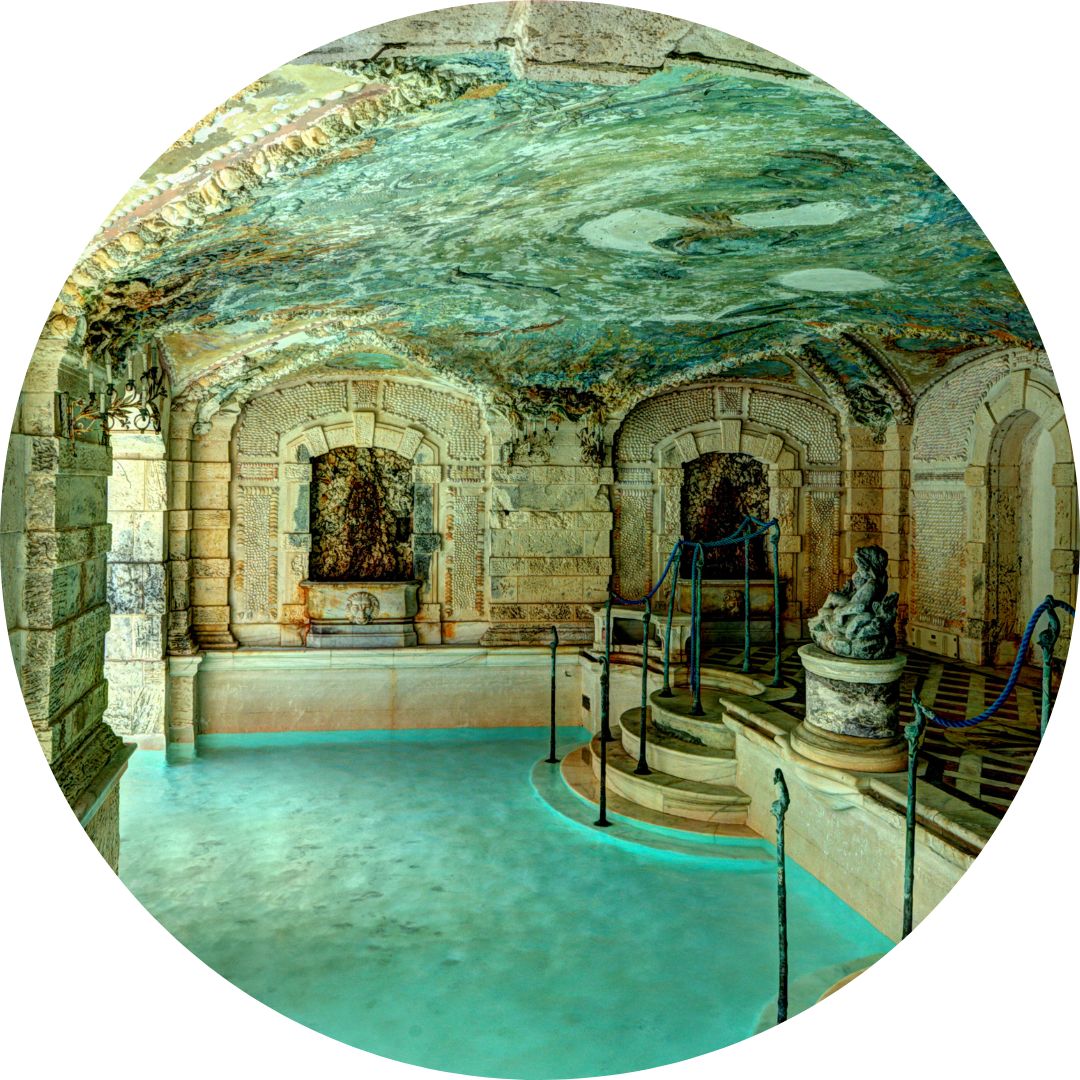Breaking Barriers: Fashion Fusion – Where Technology, Style, and Sustainability Collide

Introduction
There’s no denying the fascinating fusion between fashion and science, and recent innovations have truly taken this collaboration to a whole new level. Who could forget the iconic spray dress that graced Paris Fashion Week 2022, worn by the stunning Bella Hadid? Crafted by Sébastien Meyer and Arnaud Vaillant from Coperni using ‘Fabrican’ – a liquid fabric in a can – this dress redefined the very essence of fashion with its groundbreaking workmanship and materials.
And guess what? Coperni is at it again this year with the Air Swipe bag, composed of a whopping 99% air and 1% glass. Through innovative designs and cutting-edge materials, science is reshaping the landscape of contemporary fashion, creating a harmonious blend of style and sustainability that’s propelling the industry into exciting new territories. Keep on reading to delve deeper into how this dynamic duo of fashion and science is reinventing the world of style!
Photo credit: LIGHTFIELD STUDIOS – stock.adobe.com
Combining Fashion and Science: The Air Swipe Bag by Coperni

Photo credit: oraziopuccio – stock.adobe.com
While it is important to take into consideration the impact that technology will have in the future of fashion industry, it is also legitimate to ask how sustainable these processes are and whether technology itself can represent a breakthrough regarding sustainability.
Now, although there is still a long way to go, we know that there are many realities that, precisely through scientific solutions, are helping to overturn the system of fast fashion industry to reduce the impact that the consumption and production of garments currently have on the Planet. But how?
The choice of sustainable materials, such as recycled and biodegradable fibers, is a viable alternative to traditional ones; at the same time, 3D printing, and digital printing help reduce energy waste and environmental impact. It is no coincidence that brands are increasingly resorting to 3D models for the creation of their collections, without using chemicals that would impact air and water pollution. Despite slower production, textile waste and overproduction of garments are reduced.
Scientific trends in contemporary fashion: New Materials; The future is “Bacteria
We have said that designers are using eco-friendly materials for their creations, but what exactly are they?
Fibers derived from food – such as orange peels, apple peels, coffee, mushrooms, pineapple leaves – are the ones most used and on which brands are currently doing the most research. There is no doubt, however, that fabrics made from these materials not only have less impact on the environment, but are also biodegradable, recyclable and long-lasting.
Bacteria-made textiles and materials have emerged as a promising solution to the environmental challenges posed by traditional textile production. By harnessing the natural processes of bacteria, these innovative materials offer a sustainable alternative that combines functionality with eco-friendliness. The conversion of food waste into textiles begins with bacteria fermenting the organic matter to produce sugars. This fermentation process results in the formation of liquid cellulose, which can then be dried into textile or sheet materials. Such a process not only helps in reducing food waste but also minimizes the reliance on resource-intensive materials typically used in textile production.
One of the key advantages of bacteria-made textiles is their customizability in terms of color, texture, and thickness. These materials are well-suited for a wide range of applications, including footwear, accessories, apparel, interior decor, and automotive industries. Companies like Polybion, Malai-eco, and Modern Synthesis have pioneered the development of these materials, offering innovative alternatives to traditional textiles. A virtuous example of the intelligent use of such resources has been Stella McCartney, who has made many pieces from Mylo in her collections. Mylo is nothing more than a type of vegan leather made from mushrooms, created by Bolt Threads – a big company of scientists and engineers – through a process of growth and transformation process which consists of by growing the mycelium in a mixture of sawdust and organic material. Again, it is mostly used for common leather goods and is characterized by its extreme versatility and elasticity; in fact, depending on how it is processed, it can take on different colors and textures. Moreover, its entire production cycle is zero impact and 100% cruelty free.
Leading Innovators in Bacteria-made Textiles:
- Polybion’s Celium: Utilizes local Mexican fruit waste to grow a leather-like material, showcasing the potential of sustainable sourcing in textile production.
- Malai-eco: Combines waste coconut water from South Indian farms with hemp, banana, gum, and resin to create unique cellulosic gelatine materials, ideal for accessories with a textured look.
- Modern Synthesis: Using microbes grown onto thread frameworks, they produce nanocellulose leather-like materials known for their rip-stop qualities and distinctive dry, warm feel. The recent multi-million-dollar seed funding signifies the growing interest in biomaterials.
- GOZEN and Bucha Bio: GOZEN from Turkey has developed a 3D ultra-crystalline translucent microbial material, while Bucha Bio from Texas offers leather-like mono-materials resistant to water, scratches, and sunlight. Their innovative approaches highlight the diverse capabilities of bacteria-made textiles.
Bacterial Pigments and Coloring Technology

Photo credit: dannyburn – stock.adobe.com
In addition to textiles, bacteria are also being utilized to create sustainable dyes for coloring fabrics. By leveraging DNA sequencing to identify pigment-making genes in nature, companies can replicate these genes in microbes to produce vibrant dyes. This process eliminates the need for chemicals, heavy metals, and salts commonly found in traditional dye fixatives, making the coloring process more environmentally friendly.
Applications and Collaborations in Bacterial Coloring:
- H&M CO: LAB: By investing in Colorifix’s industrial-scale color production, H&M demonstrated early leadership in sustainable coloring methods. Partnerships with brands like Pangaia and Vollebak have further expanded the reach of bacterial pigments in the fashion industry.
- Puma and Faber Futures: Puma’s Design to Fade range and Faber Futures’ collaboration with biotech innovators showcase the potential of living bacterial dyes in creating unique and sustainable color patterns for fabrics.
- Albini and @kbcolssciences: Italian mill Albini’s partnership with @kbcolssciences from India signifies a global effort to test and implement bacterial dyes in mainstream textile production, emphasizing the growing importance of sustainable coloring methods in the fashion industry.
Renewable energy bacteria in the materials of the future

Photo credit: A biofilm-powered sensor, on the neck, that measures the mechanical signal of swallowing.
Credit: Liu et al., 10.1038/s41467-022-32105-6 – https://www.umass.edu/
Among the challenges of the future, perhaps the most important is the one concerning the production of renewable energy through special textile materials, again composed of bacteria.
The project is still in the experimental phase, but the goal would be to be able to transform sweat into energy to power textiles, which would become usable as batteries – for example, to recharge mobile phones – eventually replacing traditional batteries made of environmentally harmful materials. Currently, the University of Massachusetts has succeeded in developing a bacterial biofilm with the potential to fulfil this purpose: Electric Skin. A flexible battery embedded in a biodegradable, skin-friendly algal material, capable of producing up to 0.5 volts on a seven-micrometer thick film, enabling the membrane to recharge devices by exploiting the air.
Today’s challenge for brands, in short, is to ensure not only the sustainability of their collections, but also to demonstrate to customer – who is very sensitive to this issue nowadays – their determination to develop and adopt innovative technologies that are not only aesthetically pleasing, but also good for the planet.
Conclusion

Photo credit: serg3d – stock.adobe.com
As technology continues to evolve, we expect to see more and more amazing collaborations between fashion designers and scientific innovators, taking the fashion industry to new frontiers of style and functionality. The Air Swipe bag is just one example of this extraordinary evolution, demonstrating how the marriage of fashion and science can lead to surprising results.
However, considering what has been said, even if technological innovation has the potential to transform the fashion industry by leading it towards sustainability through reducing environmental impact, improving production, reducing waste and reducing unnecessary emissions, the issue of sustainability is a challenge that involves everyone, from brands down to consumers, who, through their ethical choices, can help promote this change.
Bacteria-made textiles and materials represent a significant advancement in sustainable fashion. By harnessing the power of bacteria to convert food waste into usable materials and create eco-friendly dyes. As companies continue to invest in research and development in this field, the future of fashion looks increasingly sustainable and environmentally conscious. Perhaps one day, sooner than we realize, we’ll be donning bacteria as our everyday clothing. How cool would that be? Just something to look forward to!



